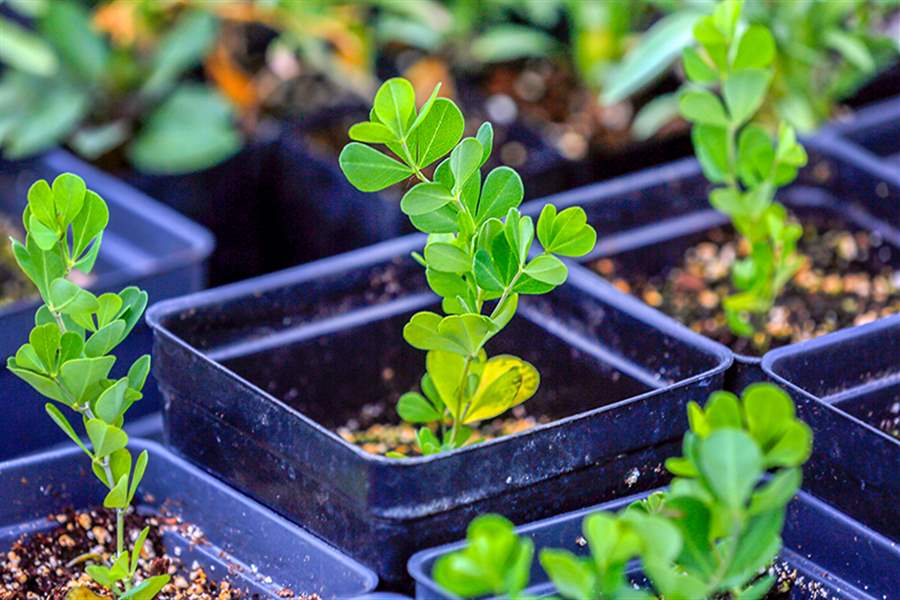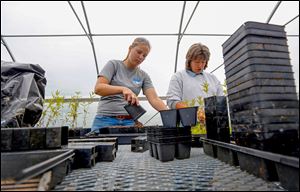
Greenhouse aims to preserve native species
Plants cultivated for use in Olander Park System flower beds
6/16/2014
Yellow wild indigo is among at least 5,000 indigenous plants and seedlings being cultivated.
THE BLADE/AMY E. VOIGT
Buy This Image

Becky Kanitz, left, a conservation team member, and Robin Parker, assistant manager at Olander Park System, transplant native plants to bigger pots in the greenhouse at Sylvan Prairie Park.
Robin Parker admits it, she talks to plants. Probably thousands a day.
Mrs. Parker, Olander Park System assistant manager, is cultivating at least 5,000 indigenous plants and seedlings inside a greenhouse at Sylvan Prairie Park. The plants will eventually be used in the park system’s flower beds.
“We do talk to them,” Mrs. Parker happily admitted while standing over the young lupine seedling, which she described as a “showy” plant.
PHOTO GALLERY: Olander Park greenhouse
“The natural flora and fauna of the Oak Openings Region is rare. As good land stewards we need to promote that rarity,” she said.
Along with representing the region’s unique vegetation, she said the plants are integral to the web of life, hosting insects.
“Like the lupine. It is a host plant to the Karner blue butterfly,” which is an endangered species, she said.
The lapis blue and purple butterfly matches the exuberant blue-colored lupine, a symbol of the Oak Openings Region.
Although Thursday afternoon was cool and gray outdoors, temperatures reached above 80 degrees in the greenhouse where flats of seedlings were developing.
“The idea is to have the plants develop a strong root system before being planted,” Mrs. Parker said, adding that they are moved to larger pods as they grow.

Yellow wild indigo is among at least 5,000 indigenous plants and seedlings being cultivated.
The greenhouse opened in the fall. And in January crews started to “cold stratify” the seeds. Most require cold moisture, she explained, for at least 30 to 120 days in order to germinate.
She and Olander conservation crews are nurturing more than 30 species, including butterfly weed and swamp milkweed. The former blooms bright orange, and the latter a sweet lavender. One black-eyed Susan was already standing tall with its yellow petals and dark center arranged like minisunflowers.
Also sprouting is the columbine plant, which displays a fire-red flower, and various grass plants.
The park will plant the first batch of adult plants in the flower beds at Olander Park, to showcase the region’s native plants.
The Olander Youth Conservation Corps will begin the transplanting Tuesday. Conservation crews at Olander also will assist in the flower bed beautification.
Park officials said that just as they were given indigenous plants from area parks, including the Metroparks of Toledo and Wood County, they will return the favor.
Contact Natalie Trusso Cafarello at: 419-206-0356, or ntrusso@theblade.com, or on Twitter @natalietrusso.